|
|
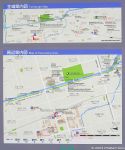
Soka Matsubara is a nice, long pedestrian path stretching for 1.5 km lined on both sides with over 600 evergreen pine trees. Part of Soka-juku post town on the old Nikko Kaido road to Nikko in Tochigi Prefecture. Designated as a National Place of Scenic Beauty. Near Dokkyodaigakumae Station (Tobu Railway from Asakusa).
|
|
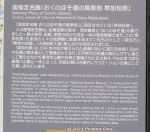
About Soka Matsubara. Some 60 of the pine trees have survived since the Edo Period.
|
|
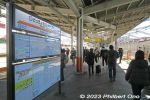
Soka Matsubara is near Dokkyodaigakumae Station (Tobu Railway from Asakusa) east exit.
|
|
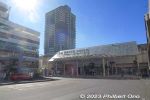
Dokkyodaigakumae Station (Tobu Railway from Asakusa) east exit. Get out here to walk to Soka-Matsubara.
|
|

From Dokkyodaigakumae Station's east exit, walk on this main road to Soka-Matsubara. Short walk.
|
|
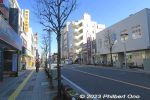
While walking on this main road to Soka-Matsubara, you will soon see the large arch bridge over the road.
|
|
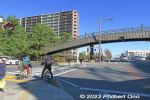
Where the Soka-Matsubara pine tree path intersects with a major road at two locations, there's a large arch bridge to enable pedestrians to keep walking non-stop along the pine trees.
|
|
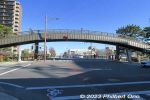
This is one of the two arch bridges. Named Hyakutai-bashi (百代橋), 62.5 meters long, 3.5 m wide. It has steps and a narrow slope to push bicycles. Not wheelchair accessible.
|
|
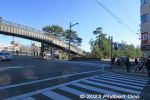
Soka-Matsubara pine tree path continues on the right going south. There's another similar arch bridge at the intersection further south.
|
|

The arch bridge is near the middle of the pine tree path. If you want to walk through the entire pine tree path from here, go left first, then backtrack and walk south until the end. Monument near the arch bridge.
|
|
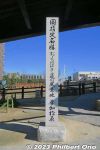
Monument indicating Soka-Matsubara as a Scenic Place on the Oku-no-Hosomichi path.
|
|
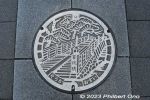
Soka's manhole depicts Hyakutai-bashi (百代橋) and Soka-Matsubara pine trees in Soka, Saitama. "Hyakutai" (Eternity) comes from Basho's Oku-no-Hosomichi poetry collection.
|
|
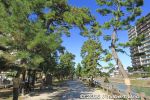
From Hyakutai-bashi Bridge, I first walked north along Soka-Matsubara.
|
|
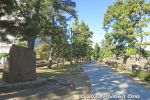
Matsuo Basho monument
|
|
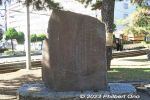
Matsuo Basho monument at Soka-Matsubara.
|
|
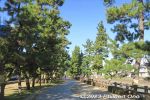
Soka-Matsubara pine trees north of Hyakutai-bashi Bridge.
|
|
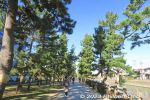
Soka Matsubara pine trees may have been originally planted as early as 1683 by government official Ina Tada'atsu (伊奈忠篤) in the Fudaba Park area where there was a river boat dock.
|
|
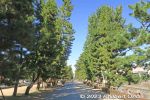
By 1877, Soka-Matsubara had 800+ pine trees. In the 1930s, Soka-Matsubara had over 700 pine trees. However, by the 1960s due to vehicle exhaust fumes, the number of pine trees shrank to 60.
|
|
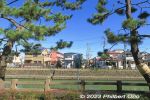
A local group was formed in 1976 to replant pine trees. Their efforts was successful with 500+ trees planted. Vehicular traffic through the pine trees stopped in 1982. Thankfully, it's now pedestrians only.
|
|
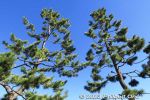
Green pines against the blue sky are therapeutic for the eyes.
|
|
|
|
|
|
|
|
|
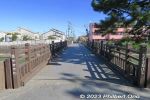
Nakazone Bridge over Ayase River.
|
|
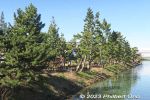
Ayase River
|
|
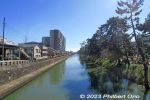
Ayase River looking south. 綾瀬川
|
|
|
|
|
|
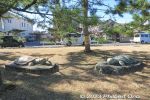
Turtle sculptures.
|
|
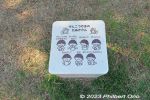
Stone bench.
|
|
|
|
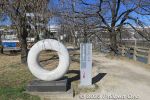
The northern end of Soka-Matsubara has this ring.
|
|
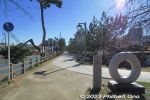
Northern end of Soka-Matsubara. From here, walk 1.5 km to reach the southern end of Soka-Matsubara pine trees.
|
|
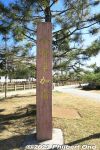
Monument says 今様草加松原 mean "Modern-style Soka-Matsubara" in reference to current efforts to preserve the pine tree path in modern ways.
|
|
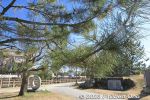
Northern end of Soka-Matsubara.
|
|
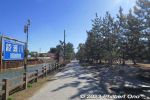
Starting to backtrack to Hyakutai Bridge and proceed to the southern end of the pine trees.
|
|
|
|
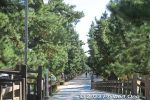
Soka-Matsubara pine tree path.
|
|
|
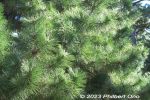
Pine needles and pine cones.
|
|
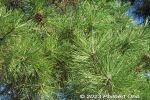
Pine needles and pine cones up close.
|
|
|
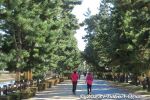
The pine tree path is popular among joggers and for walks.
|
|
|
|
|
|
|
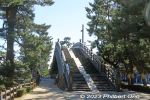
Back to Hyakutai Bridge. This is near the halfway point on the Soka-Matsubara path.
|
|
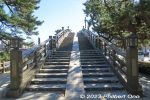
Hyakutai Bridge has steps and a narrow slope for pushing bicycles. Not wheelchair accessible. 百代橋
|
|
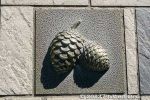
Hyakutai Bridge is decorated with small relief sculptures like these pine cones.
|
|
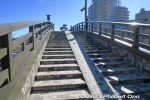
Going up Hyakutai Bridge.
|
|
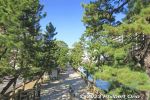
Northern view from Hyakutai Bridge.
|
|

Northern view of pine trees from Hyakutai Bridge.
|
|

Hyakutai Bridge.
|
|
|
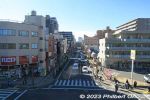
View from Hyakutai Bridge. This road goes to the train station straight ahead.
|
|
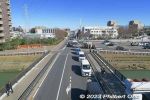
View from Hyakutai Bridge.
|
|
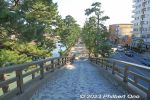
Southern view from Hyakutai Bridge.
|
|

Southern view of Soka-Matsubara pine trees from Hyakutai Bridge, Saitama.
|
|
|
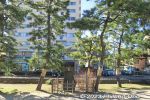
Along the pine tree path is this monument for the Japanese bush clover planted by the late Donald Keene who first visited Soka in 1988 to give a keynote speech at the Oku-no-Hosomichi International Symposium.
|
|
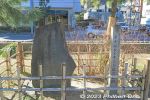
Monument for the Japanese bush clover planted by the late Donald Keene. Flowers not in season in Feb. Donald Keene was a renown professor of Japanese studies (especially literature) at Columbia University in New York. ドナルド・キーン記念植樹
|
|
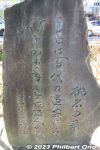
Monument for the Japanese bush clover planted by the late Donald Keene.
|
|
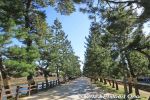
Walking south along Soka-Matsubara pine trees.
|
|
|
|
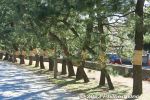
Straw bands are wrapped on the tree trunks to catch harmful insects.
|
|
|
|
|
|
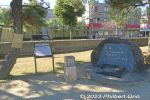
Monument inscribed with: "Place of Scenic Beauty: Soka Matsubara - Scenic Place Along Oku-no-Hosomichi" Calligraphy by Donald Keene.
|
|

About Soka Matsubara as a Scenic Place Along Oku-no-Hosomichi. It's one of the 25 designated Scenic Places along the Oku-no-Hosomichi extending over 12 prefectures.
|
|
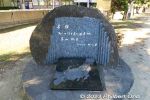
Donald Keene wrote the inscribed sentence: "Place of Scenic Beauty: Soka Matsubara - Scenic Place Along Oku-no-Hosomichi"Donald Keene was a renown professor of Japanese studies (especially literature) at Columbia University in New York. Keene is revered in Soka for helping with local activities related to Oku-no-Hosomichi.
He also famously became a Japanese citizen and spent the last years of his life living in Japan.
|
|
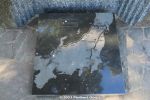
Soka's claim to fame is this pine tree path's inclusion as a Scenic Place along the Oku-no-Hosomichi travel route taken by famous Haiku poet Basho.Monument includes a map of Basho's Oku-no-Hosomichi travel route. He started from Fukagawa, Tokyo, visited Soka, went up north to Sendai, Sakata (Yamagata), and proceeded back along the Sea of Japan, Niigata, Kanazawa, Tsuruga, and ended at Ogaki, Gifu. All the places he visited on this epic journey has monuments or statues celebrating Basho.
|
|
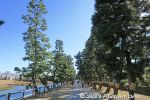
Non-stop pine trees on Soka-Matsubara. Probably the longest pine tree path I've been on.
|
|
|
|
|
|
|
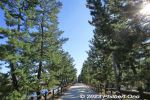
Soka-Matsubara pine trees in Soka, Saitama. Part of the Nikko Kaido road and Oku-no-Hosomichi stop by Haiku poet Matsuo Basho.
|
|
|
|
|
|
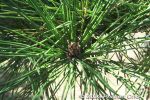
Pine cone
|
|
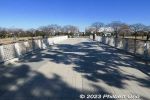
Harp Bridge to Matsubara Ayasegawa Park across Ayase River.
|
|
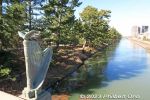
Harp Bridge has a harp sculpture.
|
|
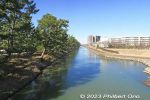
Soka Matsubara goes along the Ayase River. 綾瀬川
|
|
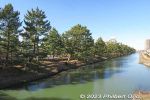
Soka Matsubara goes along the Ayase River.
|
|
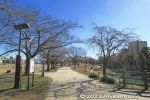
Matsubara Ayasegawa Park is a large park with cherry blossoms.
|
|
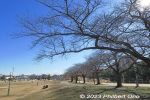
Matsubara Ayasegawa Park's cherry blossoms must be beautiful when in bloom.
|
|
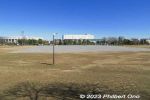
Matsubara Ayasegawa Park
|
|
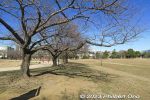
Matsubara Ayasegawa Park
|
|
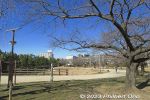
Matsubara Ayasegawa Park
|
|
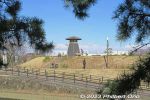
Matsubara Ayasegawa Park watchtower
|
|
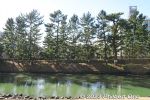
Soka-Matsubara pine trees and Ayasegawa River.
|
|
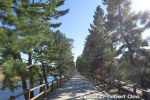
Walking further south along Soka-Matsubara.
|
|
|
|
|
|
|
|
|
|
|
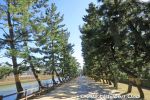
Such a pleasant walk along Soka-Matsubara.
|
|
|
|
|
|
|
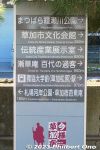
Directions and distances.
|
|
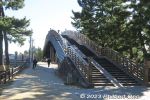
The other arch bridge on the southern end of Soka-Matsubara.
|
|
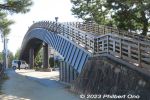
Yatate Bridge on the southern end of Soka-Matsubara. It's 96.3 meters long and 4.14 meters wide. Bigger than Hyakutai Bridge. 矢立橋
|
|
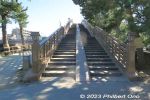
Yatate Bridge includes a narrow slope for walking your bicycle. Not wheelchair accessible. 矢立橋
|
|
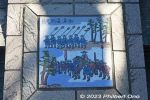
Bicycle slope decorated with these picture tiles.
|
|
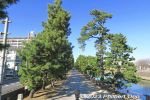
Northern view from Yatate Bridge.
|
|

Northern view from Yatate Bridge.
|
|
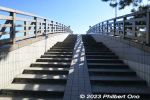
Going up Yatate Bridge.
|
|
|
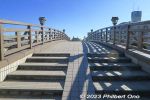
Top of Yatate Bridge.
|
|
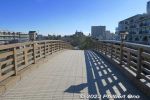
Top of Yatatebashi arch bridge.
|
|
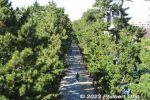
Northern view from Yatate Bridge.
|
|
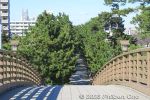
Northern view from Yatate Bridge.
|
|
|
|
|
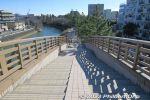
Southern view from Yatate Bridge.
|
|
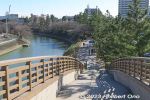
Looking south from Yatate Bridge. Almost the end of Soka-Matsubara pine tree path.
|
|
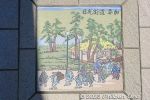
Picture tile on the bridge depicting a samurai procession on the Nikko Kaido in Soka.
|
|
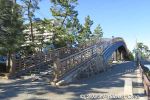
Yatate Bridge on the southern end of Soka-Matsubara. "Yatate" also comes from Basho's prose in Oku-no-Hosomichi. 矢立橋
|
|
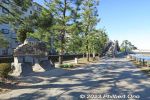
Nikko Kaido Road monument near Yatate Bridge. The monument is in the shape of Saitama Prefecture indicating Soka-Matsubara on Nikko Kaido is one of Japan's 100 Best Roads. 日本の道百選の顕彰碑
|
|
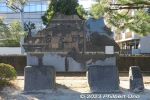
Nikko Kaido Road monument. Nikko Kaido was one of the five main roads from Edo (Tokyo) during the Edo Period (17th to 19h centuries). Nikko was important for having the splendid mausoleum for Tokugawa Ieyasu, the first Tokugawa shogun.
|
|
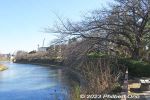
The southern end of Soka-Matsubara has Fudaba-kashi Park with cherry blossom trees and tourist information center. 札場河岸公園
|
|
|
|
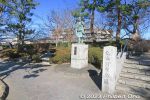
Statue of Matsuo Basho in Fudaba-kashi Park on the southern end of Soka-Matsubara. Statue was built in 1989 to mark the 300th anniversary of Basho's Oku-no-Hosomichi journey in 1689. Built with donations.
|
|
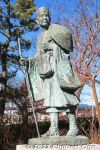
Statue of Matsuo Basho at the southern end of Soka-Matsubara, Saitama. Depicts him looking at his well-wishers in Tokyo (Edo) as he departed for his Oku-no-Hosomichi trip.
|
|
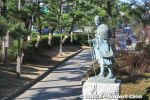
Statue of Matsuo Basho at the southern end of Soka Matsubara pine tree path in Fudaba-kashi Park. Created by Tadahiko Mugikura (麦倉忠彦), a Soka-native sculptor. He also made the Kawai Sora sculpture nearby in 2008.
|
|
|

Fudaba-kashi Park on the southern end of Soka-Matsubara also has this rebuilt watchtower.
|
|
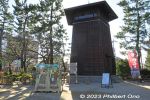
Watchtower on the southern end of Soka-Matsubara. 望楼
|
|

Watchtower is free and open to the public.
|
|
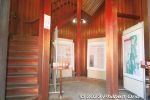
First floor of watchtower has a few exhibits explaining about Soka-Matsubara and Soka-juku post town.
|
|
|
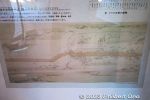
Old map of Soka-juku post town.
|
|
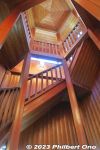
Spiral steps up the wooden watchtower.
|
|
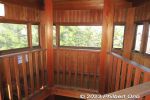
Top floor and lookout atop the watchtower.
|
|
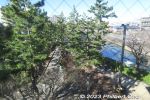
Views from the watchtower.
|
|
|
|
|

Post towns along the Nikko Kaido Road to Nikko.
|
|

Map of Soka-Matsubara and Soka-juku post town, short walk away.
|
|

About the watchtower and Soka post town.
|
|

Near the watchtower is Soka-juku Basho-an, a visitor information center.
|
|
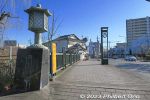
Bridge to Osen Park.
|
|
|
|
|
|
|
|
|
|